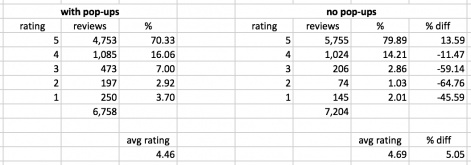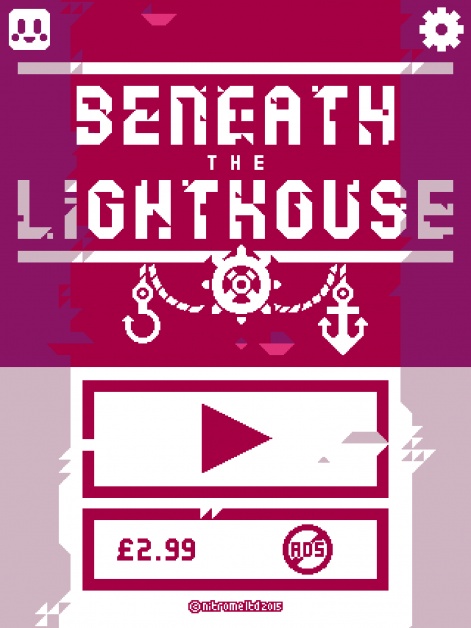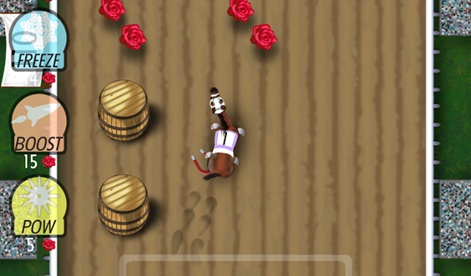In the world of free-to-play games, in-game ads have become an accepted method of trying to monetise users that might not want to pay for any IAPs.
But just how effective are ads in free-to-play games, especially when you can't get access to huge numbers of players through paid UA campaigns because you're, say, an indie developer?
To find out, we turned to our Indie Mavens to find out their views on the usefulness of ads in their own experience.
More specifically, we asked:
- How useful are ads compared to other forms of monetisation for indie developers?
- If you have tried using them, how did you implement them?
Ads make us money, so that's useful!
In all seriousness though, ads allow us to pursue a free model and meet our goal of getting our games in the hands of as many players as possible.
It works for our current batch of instant arcade games. For instance, Dashy Crashy generates 2/3 of its revenue from Unity Ads, and the rest from IAP.
With Dashy Crashy we opted for a 'TV Commercial' approach to ads - after every six plays a 15 to 30s video ad (commercial break) would interrupt the game.
We found that the trick was to let players know this was coming with a countdown indicator (think of the title 'ad blinkers’' in the top right corner of your favourite TV shows before they break for an ad).

We supported this approach with a 'pay-what-you-like' model to removing them, in which buying any car - ranging from $0.99 - $2.99 - would remove the ads permanently. We were keen to support the players purchase of removing ads with a tangible 'toy' that they could feel good about and could play with.
This proved quite successful for the value of the content we had in the game at the time, and has allowed us to develop further and experiment with a new ad model in the Dashy Crashy TURBO update, one that better supports the content of the game and removes the forced interruptions.
The difficulty we always had with ads was simply getting enough downloads in the first place for the ads to make money, but that's another issue.
The difficulty we always had with ads was simply getting enough downloads in the first place.Aaron Forthergill
We’ve not used ads for a little while as we've focused on the straightforward paid model, but having seen good use of the video reward ads, we’re probably going to try a free/video ad funded game next year, so it'll be interesting to see everyone else input on this topic!
One little nugget of ad usage we did try was back on SnapMatch Soccer, which was the last of our PlayNice games. Free with fair IAP and banner ads.
As a test to see if we could get over the negativity of players towards in-game ads, we made it so the player's teams actually earned part of the ad revenue as in-game currency whenever ads were shown, just like a football team would do in real life.
The idea being that players would feel a little better about the ads. The game went so under the radar it was impossible to say if the tactic was successful in any way though!
I've probably already shared some of our experience about ads in one of our past discussions here.
Paying no attention to the question of coin, I can say that the difference between a soft ads monetisation, where users opt-in to see ads, and a more harsh way of ads monetisation, where users are forced to see ads in pop-ups, makes no significant impact either on game metrics like retention or on user reviews and the overall app rating, in case the game is good and engaging.
In our practice, for example, we saw games with opt-in ads and poor retention and games with pop-ups and great retention. Our research of other top games shows that there are ones that show ads each five to 10 games and still have good ratings. Probably, modern audience accept ads as something normal nowadays.
Regardless of the monetisation scheme, a game should offer enough content in order to allow a sustainable model of business.Pavel Ahafonau
Other than that, regardless of the monetisation scheme, a game should offer enough content in order to allow a sustainable model of business.
Otherwise, a developer that makes such a game would greatly depend on luck, for example, of being featured or getting some other, naturally, free of charge promo/traffic from a huge partner (e.g. by making an app or a game for a huge brand).
A simple game with little content won't earn enough income that's necessary to afford keeping the revenue flowing while staying profitable - IAP or ads monetisation doesn't matter from that point of view.
After experiments and optimisations some of our games nearly reached the barrier of sustainability, but it's still risky to invest significant money into growth and traffic. Now we've switched to production of games with more content and deeper engagement, including, of course, work on improving metrics of existing games - that's why we're now in a stealth mode with no new releases.
The bad thing about it is that there is no universal recipe that always works. Some things work in one game and do not work in another game. And what's important is to keep the active audience at some big enough level. When DAUs of the game drops to small numbers, the ad revenue per user may drop by a factor of 10.
We found that with the forced ads model our low reviews were primarily based upon clams of "too many ads" or inaccurately "an ad after EVERY play!" etc. - and although somewhat hyperbolic (the internet? no!) it did highlight player sensitivity to such friction points.
We found this approach also had a significant impact in China, whose players react very negatively to forced ads and models that aren’t opt-in it seems.
To be accurate, here is the difference between two game ratings. 13.59% more 5* ratings. But just 5.05% of overall improvement in our case. That's US data.

As most indie developers with little or no budget for UA are dependent on features from Apple and Google, it is important to monetise within the time the game is featured. Compared to bigger studios, indie game developers can afford to launch games with lower retention rate.
Games with low retention rate are dependent on ads as some of them do not have players to monetise from after a week or two.
It’s good to make certain rules for first time users, and different rules for returning users.Sebastian Lindén
Also, I remember talking with Florian (Product Lead at Wooga) how ads can be used in combination with IAP as a pause for players to not get bored of repetitive gameplays. The simpler games, the more important it is to find ways to limit session time.
Ads can be a way to do this. I think Travis and Dumpling Design have done a great job in letting users know when they will show ads. If the user is prepared, they will be more ok (and sometimes happy) with seeing ads.
We’ve tried Heyzap, Chartboost and Unity Ads, usually depending on current eCPM and various formats/type of ads.
I talked with Colin Lane a while ago on how often to show ads, and when to start showing them. I think his games are great examples of how to monetise from ads, while not killing players.
I think it’s good to make certain rules for first time users, and different rules for returning users.
I certainly wouldn't consider us an expert on all things ads, but we have used them in 17 games now, so I think I probably have something worth sharing.
We started off making games for the web funded by ads before making the move to mobile where we initially made premium games. We had some success in premium, but even when considering that premium has declined since our first release the difference even then was stark. It is far easier to make a return on your time when using ads over premium IMHO.
If you just copy the ad placements of other devs and use the more well-known ad networks you should do ok.Mat Annal
We have never heavily tried to go the IAP route, but I feel that for an indie dev primarily driving users from features that it is a lost cause. Without running your game as a service, the player is unlikely to invest enough time to want to invest real money into it.
Interestingly, we were initially hesitant to move to ads knowing the tiny return we would make per user on web games. I'm happy to say the way that ads are fitted to a mobile game and better CPMs make your return per user much higher... it's still tiny though!
The tiny amount per user is more than offset by the number of downloads a free app gets vs a premium one when featured on the app stores. That, I think, is the most valid argument for an indie dev to consider using an ads-based model.
It is possible to screw up your implementation and make less, but if you just copy the ad placements of other devs and use the more well-known ad networks you should do ok.
Primarily we use ads on death in the game as a full screen interstitial. We control externally how often they show but typically every three to four deaths depending on typical play length.
We also use rewarded video in most of our games. How well this works depends a lot we find on how you implement it. We have found some things like ads for level skips barely paid at all, whereas checkpoints and revive systems both seem to work well for us.
We usually make most of our game revenue from interstitial ads, with rewarded video second, and IAP a distant third. However, we have had one game where we made most of our money on rewarded ads and made almost the same on IAP as on interstitial.

There is still a lot to explore in what can work within the ads-based format, and we find that the returns we get are improving swiftly over time as we learn new best practises.
We try to be as friendly to the player where we can so they are less frequent when they first start the game for the first time to let them get into it. We always include an option to remove ads for people that want it. It's not a major money maker but we believe in giving that choice.
We're also getting careful not to balance rewarded ads (ads people choose to watch for a reward) with interstitial ads. We see people getting confused and frustrated when they choose to watch an ad then get another two seconds later when they die, so we avoid that scenario.
We will probably keep finding small ways to tweak the player experience like this to make it as comfortable as possible.
I think ads are a value proposition for the player. If you don't try to trick them they can respect that they are there paying for their experience in the same way as we accept ads on TV.
We don't have much experience with ads, but I've been noticing a bit of a revival of low-retention arcade games with very clever incentivised ad schemes that seem to monetise quite well.
The latest Burrito Bison game is one in particular where I found myself watching tons of ads for rewards that feel really good because they are part of the gameplay.
We are looking at this kind of ad-driven model for our own games now.
Finger Derpy, a funny one to four player horse-racing game, was our first free-to-play game. We launched it on iOS and Android.
Apple featured it in their "Best New Game" section (not at the top carousel, but in the middle part), but there was no Android feature. We have about 45k downloads on iOS and 10k+ downloads on Android.
We used the "Crossy Roads" model of opt-in ads only, in which users watch a video ad to get some in-game roses to spend on upgrades.

I worked on this for three months, and updated it twice with two large content updates (a Thanksgiving one and a Winter one), along with smaller bug updates.
There are also some IAPs for more in-game currency (to buy horses and upgrades), and an IAP to remove ads.
The ads revenue beat out the IAP revenue, but between it all, it was not nearly enough to justify that much time on the project.
We are working on a Steam/console game, but I've also created another mobile game, this time in one week. I'm thinking of using ads for it (instead of premium).
I'll see how the return on investment is for it soon.




























